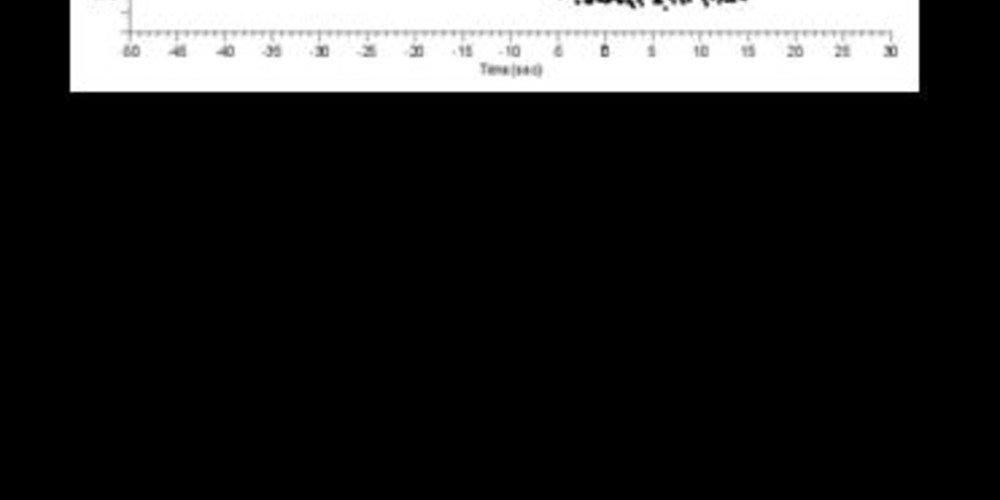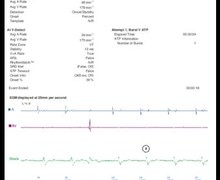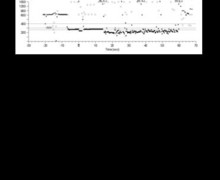Committed shock
Tracing
Manufacturer Medtronic
Device ICD
Field Therapy
N° 12
Patient
Same patient as in the previous tracing; second episode of syncopal ventricular arrhythmia; this tracing allows focusing on the functioning of the post-shock phase following an electrical shock.

Graph and trace
The graph initially shows a stable and regular rhythm followed by a sudden acceleration in the VF zone, the detection of a VF episode and finally a maximum electrical shock which at first does not slow the ventricular rate; the rhythm decelerates in a second instance, followed by the delivery of a second electrical shock.
- the EGM shows an extremely rapid and polymorphic ventricular arrhythmia corresponding to an episode of VF correctly detected by the device;
- after 30 intervals classified as FS (programmed initial detection 30/40), initial detection of a VF episode;
- the charging of the capacitors begins solely with VS markers;
- at the end of the charge, confirmation phase followed by delivery of electrical shock (35 Joules);
- this first shock is unsuccessful with persistence of VF; after 12 cycles classified as FS (programming of the redetection counter at 12/16), redetection of a VF; recharging of the capacitors;
- spontaneous termination before the end of the charge;
- at the end of the charge, the shock is delivered without confirmation, with synchronization during a spontaneous ventricular rhythm.
Other articles that may be of interest to you







This tracing shows an episode of VF with a first unsuccessful shock followed by a spontaneous termination with a second shock delivered after the return to sinus rhythm. At the end of charging for the first shock, there is a confirmation phase after which the shock is delivered. Following this shock, a blanking phase of 520 ms is initiated with no possible sensing and a 1200 ms phase with no possible pacing in order to avoid the risk of pacing during a vulnerable period if a QRS complex is not sensed during the blanking. If the shock is unsuccessful and the device redetects a VF episode, the second charge begins and the shock is irrespectively delivered ("committed shock") at the end of the charge even if termination was achieved in a second instance as demonstrated in this example. Indeed, the probability of a spontaneous termination is low after a first unsuccessful shock, the device suspecting a possible prolonged ventricular undersensing responsible for an erroneous diagnosis of a return to sinus rhythm. At the end of this second charge, a 900 ms window begins. If a ventricular complex is detected in this window, as in this example, the shock is delivered synchronously; if no ventricular complex is detected, the shock is delivered asynchronously at the end of this window.
When a shock delivered in the VF zone is successful, the device switches to post-shock pacing mode if programmed and suspends the sensing in the VT zone, including the combined counter, for 17 intervals (one interval corresponding to the VT zone is therefore classified as VS).